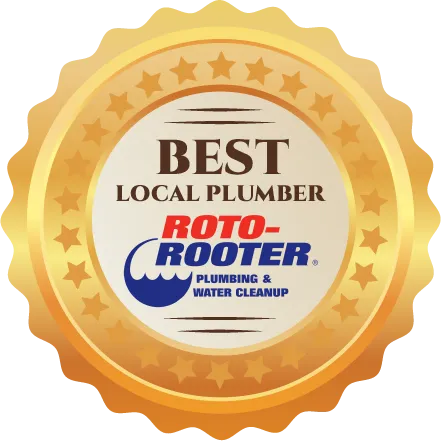DIY Drain Solutions for Clogs in St George
If you’re dealing with clogged drains in St. George, you’re not alone. Many homeowners in the area face this challenge, especially given the unique environmental factors such as the red rock sediment and mineral deposits that can accumulate in plumbing systems. The good news is that you have several DIY solutions available. Using simple household ingredients and handy tools, there are effective ways to clear those blockages. However, it’s important to first understand the underlying causes of the issue and how to address it properly. Let’s explore your options for tackling those pesky clogs in St. George.
Understanding the Causes of Clogged Drains
Understanding the causes of clogged drains is essential for maintaining a smooth plumbing system, especially in areas where specific local factors come into play.
In many neighborhoods, hair is a frequent offender, especially in homes with multiple family members who may leave it behind in showers or bathroom sinks. In kitchen sinks, food particles tend to accumulate, particularly if strainers aren’t consistently used, leading to frustrating clogs.
In regions where cooking oil and grease are common in meal preparations, these substances can easily go down the drain. However, they can solidify in cooler pipes, resulting in stubborn blockages.
Additionally, foreign objects that accidentally slip into drains can cause significant issues, especially in older homes where plumbing systems may be more vulnerable.
Tree roots are another local challenge, as they can invade sewer lines and cause severe clogs, particularly in areas with lush vegetation. Homeowners may not realize that the roots of nearby trees can reach underground pipes, creating blockages over time.
Lastly, mineral buildup from hard water is a concern in many communities, as it can gradually narrow pipes and lead to drainage issues.
Baking Soda and Vinegar Method
If you’re facing stubborn clogs in your local plumbing system, the baking soda and vinegar method is a fantastic solution that many residents have found effective.
This method works through a chemical reaction that helps break down debris commonly found in pipes, such as grease and food particles often seen in local households.
Here’s how you can do it:
- Pour 1 cup of baking soda down the drain.
- Follow it with 1 cup of vinegar.
- Cover the drain with a cloth to contain the bubbling action.
- Wait about 30 minutes, then flush the drain with hot water.
This combination not only aids in clearing clogs but also helps deodorize your drain, which can be particularly beneficial in areas where food residues may lead to unpleasant odors.
It’s a simple, cost-effective, and safe method for your plumbing. Consider trying it the next time you encounter a blockage in your home!
Boiling Water Technique
After trying the baking soda and vinegar method, another effective approach for clearing clogs is the boiling water technique. This method is particularly useful in areas where hard water can lead to mineral buildup in pipes, which is a common challenge in many regions.
It’s simple and often surprisingly effective. Just boil a kettle of water and carefully pour it down the drain in stages. Start with a small amount, wait a few seconds, then add more. This helps break down grease and debris causing the blockage.
If your drain is severely clogged, you might need to repeat this process a couple of times. Always be cautious when handling boiling water to avoid burns.
If you notice the water draining slowly, you’re likely on the right track. Remember, this technique works best for minor clogs, so keep an eye on any persistent issues.
If you live in an area with older plumbing, you may find that this method can help alleviate some of the challenges associated with aging pipes.
Using a Plunger Effectively
When faced with a stubborn clog, using a plunger effectively can make all the difference. Local plumbing issues can vary, from tree roots invading pipes to grease buildup in kitchens. Here’s how to guarantee you’re using your plunger right:
- Choose the right plunger: For common bathroom clogs, a flange plunger is ideal, while a cup plunger works best for kitchen sinks and bathtubs.
- Create a good seal: Position the plunger over the drain, ensuring it covers the opening completely to maximize suction. In regions with older plumbing, you may need to be more cautious about the materials and condition of your pipes.
- Use the right technique: Push down firmly and pull up sharply, repeating this motion without breaking the seal. For tougher clogs often found in certain areas with heavy rainfall or flooding, you may need to apply more force.
- Check your progress: After a few vigorous plunges, see if the water drains. If not, try again until the clog clears. In some localities, it might take a bit more effort to dislodge debris that can cause significant backups.
With practice and the right approach, you’ll become a pro at tackling those pesky clogs that can disrupt daily life!
Employing a Drain Snake
A drain snake is a powerful tool that can tackle clogs deep within your plumbing system, especially in areas prone to heavy foliage or older infrastructure that may be more susceptible to blockages.
To use it, first, insert the snake’s end into the drain opening. Turn the handle clockwise as you push it deeper into the pipe. In regions with frequent rainfall or where tree roots are common, you’ll likely feel resistance when it hits a clog.
Keep turning and pushing gently until the snake breaks through the blockage. Once you feel it’s cleared, slowly pull the snake out while continuing to turn the handle. This helps remove any debris that may be stuck to the snake.
After you’re done, flush the drain with hot water to clear out any remaining particles. Remember to wear gloves and have a bucket handy to catch any mess that might occur during the process, particularly if your plumbing is known for its older design that may cause more debris to dislodge.
Salt and Baking Soda Mixture
While a drain snake can effectively tackle stubborn clogs, sometimes it’s wise to try a gentler approach first, especially considering the unique plumbing challenges in older homes common in many neighborhoods.
A mixture of salt and baking soda can work wonders to dissolve buildup in your drains. Here’s how you can do it:
- Measure: Use half a cup of baking soda and half a cup of salt.
- Combine: Mix them together in a bowl.
- Pour: Dump the mixture down the clogged drain.
- Flush: After 30 minutes, follow up with boiling water to clear out any residue.
This method not only helps break down clogs but also keeps your pipes fresh, which is particularly important in areas prone to hard water issues.
Give it a try before reaching for harsher chemicals!
When to Call a Professional
Knowing when to call a professional plumber can save you time and prevent further damage to your plumbing system, especially when dealing with unique challenges that arise in our local area.
If you’ve attempted various DIY methods without success, it’s a clear indication to seek help. Persistent clogs, unusual odors, or gurgling sounds from your drains often suggest deeper issues that require expert attention.
In our region, heavy rainfall can exacerbate plumbing problems, leading to water backing up into homes or causing leaks. If you notice such issues, don’t hesitate to reach out to a plumber.
Trying to tackle severe plumbing problems on your own can lead to more significant repairs and increased costs later on.
Professionals are equipped with the right tools and possess the expertise needed to diagnose and resolve issues efficiently.
Trust your instincts—if you feel overwhelmed or uncertain, it’s always wise to contact a skilled plumber who understands the specific plumbing challenges in our area.
Conclusion
In St. George, dealing with clogged drains can be particularly challenging due to the area’s unique geological features and water quality. Fortunately, there are several DIY solutions that can help you manage minor blockages effectively. Techniques such as the baking soda and vinegar method, pouring boiling water down the drain, and using a reliable plunger can often resolve common issues.
For more stubborn clogs that might occur due to the accumulation of minerals from hard water, a drain snake can be a useful tool. However, if these methods fail to restore your drainage, it’s wise to seek assistance from a local professional. Addressing drain issues promptly can save you from potential complications and help maintain the efficiency of your plumbing system. Keeping your drains clear will ultimately save you time and prevent unnecessary hassle in the future!
Tags





